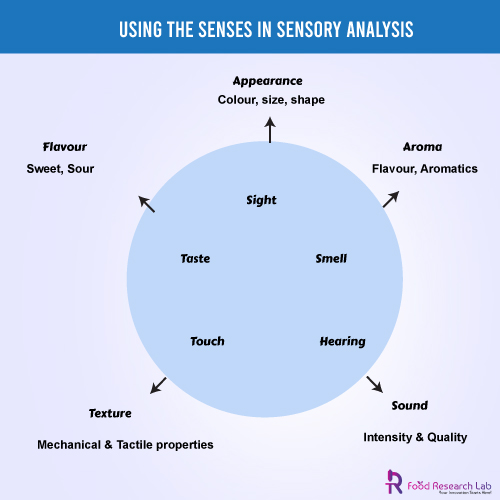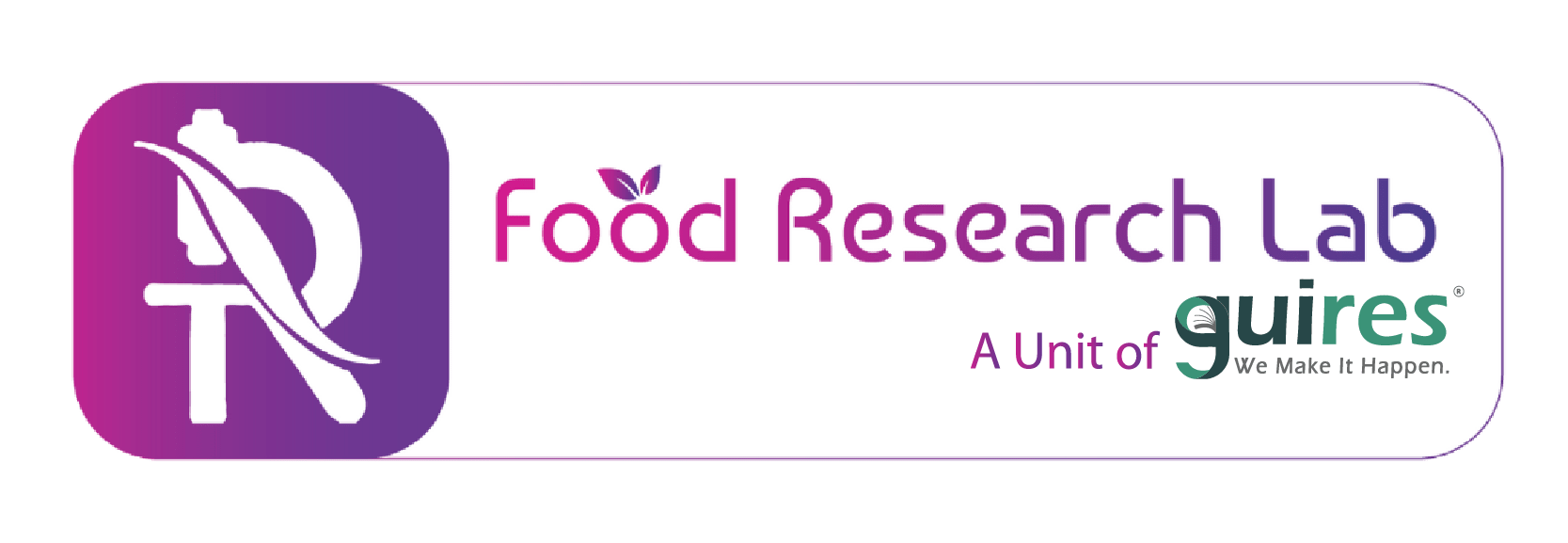
Sensory Evaluation Of Food
Introduction
People make food choices based on various factors such as cost, preference, previous experience, and what is healthy. Still, probably more crucially, they employ information collected through their senses: look, texture, taste, and smell. These sensory elements can increase a food product’s appeal, demonstrate attractiveness and quality, or meet the tastes and desires of critical groups. Food product sensory analysis can give manufacturers information for product development, marketing, and other claims.
What Is Food Sensory Evaluation?
Sensory assessment is a scientific field covering all techniques for eliciting, measuring, analyzing, and interpreting human reactions to food characteristics perceived by the five senses: taste, smell, touch, sight, and hearing. Taste and smell are two senses that have piqued researchers’ curiosity, particularly related to ingestive behaviour.
Why is Sensory Evaluation In The Food Industry Important?
Sensory assessment is a necessary method in the following five categories of problems:
- Development of new products
- Cost-cutting measures
- Increasing the level of quality
- Product acceptability
- Quality assurance and control
The sensory evaluation focuses on objective measurements of product sensory properties and subjective responses to physical products and interpretation of consumer response through product understanding.

One can use sensory analysis for quality control, shelf-life determination, estimating product launch readiness, evaluating product success, flavour profiling, and finding the factors that drive customer preferences. You can use it to make critical decisions concerning raw materials, components, additives, storage and packing conditions, expiration or “best by” dates, and product optimization.
- Difference Tests
Difference testing compares food items to see if they differ in any way. The odour, taste, and texture are only a few of these characteristics. The three different types of tests, the triangle test, the duo-trio test, and the paired comparison test, are:
- The Triangle Test determines whether discernible sensory differences exist between two items. It is especially effective when production adjustments may have resulted in product alterations. The panellists taste the three samples and identify which one is unique. When there is significant taste carryover across samples and panellists are puzzled by three models to evaluate rather than two, a triangle test may not be the best option.
- The Duo-Trio Test can also be used to detect product variances caused by changes in ingredient suppliers, storage, packaging, and other factors. The sensory Eater indicates the sample that is identical to a specific reference sample. It is straightforward to comprehend.
- Paired Comparison Tests determine which of two samples has more of a given attribute or which of two examples is favoured. It is regarded as an acceptability test in the latter application. It’s one of the most used attribute difference tests, and it’s simple to grasp for panellists.
2. Descriptive Tests
A descriptive food sensory analysis provides a complete profile of a food product’s sensory attributes and a qualitative assessment of the intensity of each feature.
- Flavour Profile Test Character traits, attribute intensity, order of attribute appearance, aftertaste, and amplitude are the five primary components of the Flavor Profile approach (the overall impression of the analyzable and non-analyzable flavour components). Initially, the flavour profile was graded on a five-point scale: not present, threshold, minor, moderate, and vigorous. Over time, the scale has evolved to include more points (initially seven, now 14) to accommodate more intensity differentiation.
- Texture Profile Test: The Texturometer – A New Instrument for Objective Texture Measurement presented five primary characteristics for evaluating food texture (hardness, cohesiveness, adhesiveness, viscosity, and elasticity) and three additional factors (brittleness, chewiness, and gumminess).
- The Spectrum Descriptive Analysis incorporates the Flavor and Texture Profile Methodologies’ rigorous training and organization and a more extensive panel group (up to 15 individuals), a more refined scale (usually 150 points, subject to the product), and statistical methods to the descriptive data.
- Qualitative Tests: Individual assessments are conducted with a panel of ten to twelve persons who are asked to quantify product qualities using a six-inch line scale with half-inch intensity indicators.
- Free Choice Profiling In two fundamental ways, Free Choice Profiling differs from the previously mentioned methodologies. To begin with, each panel’s participants are “untrained” customers. They are not chosen based on their ability or expertise in spotting tiny changes in product qualities, even if they are given instructions on the evaluation. Second, rather than an empirical rating, the participants primarily focus on offering “liking” or “acceptance” replies (among other qualifiers) as a way of measurement for each quality.
3. Affective Testing
The test method is clear and straightforward, so the panel of consumers will know how to reply.
- The Paired Preference Test is a method of determining the preferences of two people. A preference test can be undertaken once a significant difference between the two wines has been resolved. This helps decide which wine mix to use or which yeast fermentation method to utilize.
- Ranking Test: A preference ranking test may be completed if more than two samples are reviewed. A customer can usually rank three to five pieces in a reasonable amount of time. The consumer is asked to rate the samples in preference in this sensory evaluation technique, with “1” being the most desired.
- The Hedonic Test The hedonic scale can be used to determine the degree to which one or more things are acceptable. This is a categorical scale with an odd number of categories (five to nine), ranging from “dislike highly” to “like extremely.” There is a neutral middle (neither like nor dislike). Based on their responses, customers rank the product on a scale.
Conclusion:
Sensory assessment is currently neglected in the food and beverage business, but it can benefit a winery that uses the procedures effectively. Sensory evaluation can provide a foundation for judgments if controls are adequately implemented, panellists are carefully selected, practical training, appropriate sensory methods are used, and correct statistical interpretation.
Food Research Lab has expert sensory panellists who help clients in identifying and selecting the optimized product. Food Research Lab is a Global Contract R&D Food, Beverages & Nutraceutical Lab providing solutions toFood, Beverages and Nutraceuticals(F, B&N) industries worldwide. We are one of the most renowned food sensory testing companies worldwide.
Reference:
- Amerine, M. A., Pangborn, R. M., & Roessler, E. B. (2013). Principles of sensory evaluation of food. Elsevier.
- Lawless, H. T., & Heymann, H. (2010). Sensory evaluation of food: principles and practices (Vol. 2). New York: Springer.






